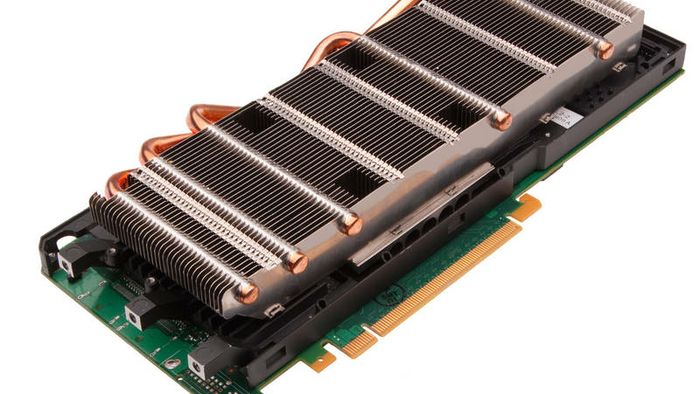SANTA CLARA, CA -- NVIDIA today unveiled the Tesla™ M2090 GPU, the world's fastest parallel processor for high performance computing. In addition, the Tesla M2090 GPU achieved the fastest-ever performance in a key measure of scientific computation.
Equipped with 512 CUDA® parallel processing cores, the Tesla M2090 GPU delivers 665 gigaflops of peak double-precision performance, enabling application acceleration by up to 10x compared to using a CPU alone.
In the latest version of AMBER 11, one of the most widely used applications for simulating behaviors of biomolecules, four Tesla M2090 GPUs coupled with four CPUs delivered record performance of 69 nanoseconds of simulation per day. The fastest AMBER performance recorded on a CPU-only supercomputer is 46 ns/day.(1)
"This is the fastest result ever reported. With Tesla M2090 GPUs, AMBER users in university departments can obtain application performance that outstrips what is possible even with extensive supercomputer access," said Ross Walker, assistant research professor at the San Diego Computer Center, and principle contributor to the AMBER code.
The Tesla M2090 GPU will be available in servers such as the new HP ProLiant SL390 G7 4U server. As part of the SL6500 Scalable System of HP server solutions, optimized for scale-out and HPC market segments, the SL390 family was purpose built for hybrid computing environments that combine GPUs and CPUs.
The SL390 G7 4U server incorporates up to eight Tesla M2090 GPUs in a half-width 4U chassis and, with a configuration of eight GPUs to two CPUs, offers the highest GPU-to-CPU density on the market. The system is ideally suited for applications ranging from quantum chemistry and molecular dynamics to seismic processing and data analytics.
"Clients running intensive data center applications require systems that can process massive amounts of complex data quickly and efficiently," said Glenn Keels, director of marketing, Hyperscale business unit, HP. "The decade long collaboration between HP and NVIDIA has created one of the industry's fastest CPU to GPU configurations available, delivering clients the needed processing power and speed to handle the most complex scientific computations."
In addition to AMBER, the Tesla M2090 GPU is ideally suited to a wide range of GPU-accelerated HPC applications. These include molecular dynamics applications, NAMD and GROMACS, computer-aided engineering applications, ANSYS Mechanical, Altair Acusolve and Simulia Abaqus, earth science applications, WRF, HOMME and ASUCA, oil and gas applications, Paradigm Voxelgeo and Schlumberger Petrel as well as other key applications such as MATLAB, GADGET2 and GPU-BLAST.
For more information on the HP ProLiant SL390 G7 4U server, go here, and for more information on the Tesla M2090 and the whole family of M-class products, please go here.
About NVIDIA
NVIDIA (
Certain statements in this press release including, but not limited to, statements as to: the availability, benefits and impact of NVIDIA Tesla GPUs; and the impact of the company's patents on modern computing; are forward-looking statements that are subject to risks and uncertainties that could cause results to be materially different than expectations. Important factors that could cause actual results to differ materially include: our reliance on third parties to manufacture, assemble, package and test our products; global economic conditions; development of faster or more efficient technology; the impact of technological development and competition; design, manufacturing or software defects; changes in consumer preferences or demands; changes in industry standards and interfaces; unexpected loss of performance of our products or technologies when integrated into systems; as well as other factors detailed from time to time in the reports NVIDIA files with the Securities and Exchange Commission, or SEC, including its Form 10-K for the fiscal period ended January 30, 2011. Copies of reports filed with the SEC are posted on the company's website and are available from NVIDIA without charge. These forward-looking statements are not guarantees of future performance and speak only as of the date hereof, and, except as required by law, NVIDIA disclaims any obligation to update these forward-looking statements to reflect future events or circumstances.
© 2011 NVIDIA Corporation. All rights reserved. NVIDIA, the NVIDIA logo, CUDA, and Tesla, are trademarks and/or registered trademarks of NVIDIA Corporation in the U.S. and other countries. Other company and product names may be trademarks of the respective companies with which they are associated. Features, pricing, availability, and specifications are subject to change without notice.
(1) http://ambermd.org/amber10_bench_files/jac_nve_kraken_ranger_large.png
